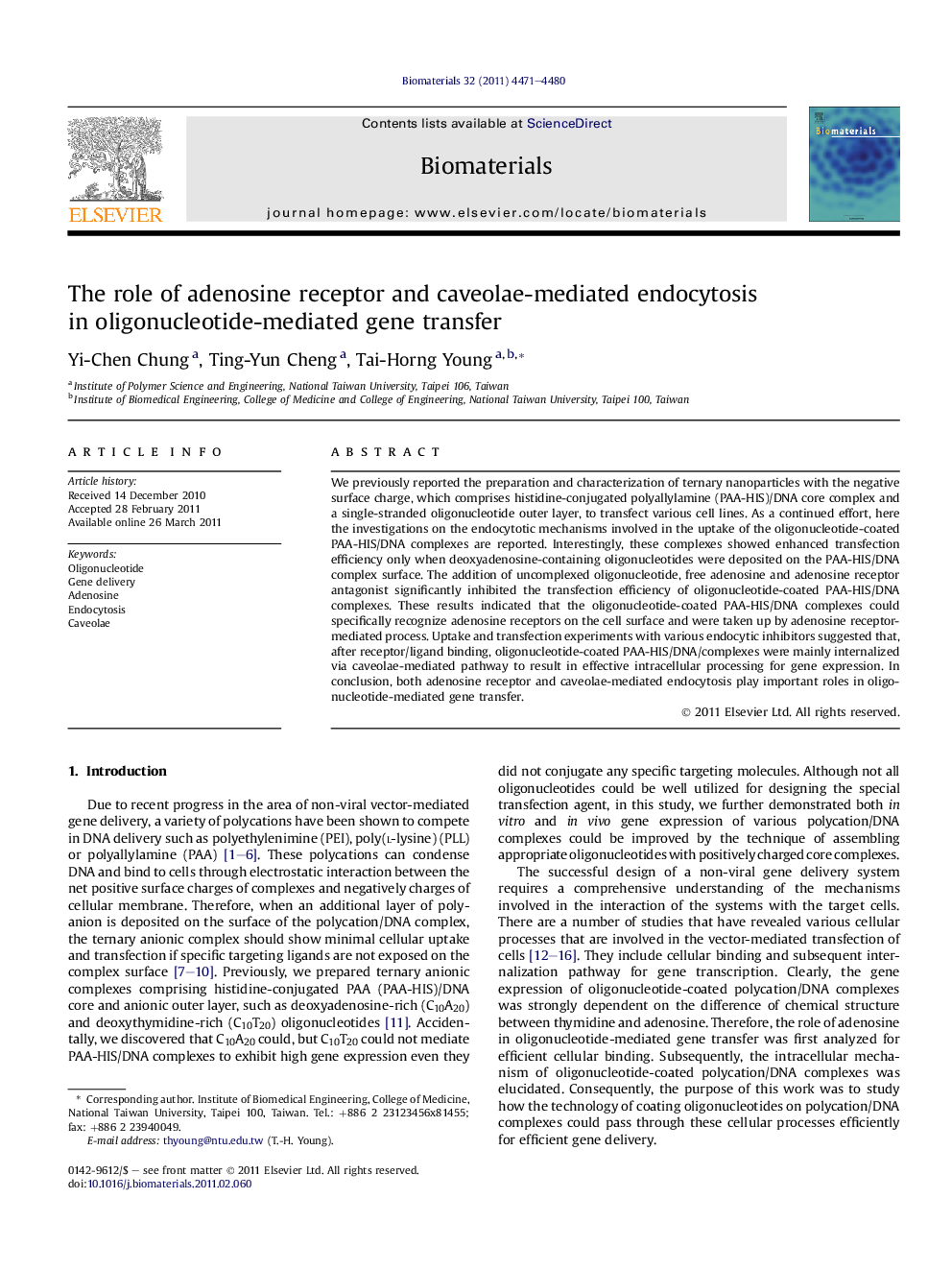| Article ID | Journal | Published Year | Pages | File Type |
|---|---|---|---|---|
| 7823 | Biomaterials | 2011 | 10 Pages |
We previously reported the preparation and characterization of ternary nanoparticles with the negative surface charge, which comprises histidine-conjugated polyallylamine (PAA-HIS)/DNA core complex and a single-stranded oligonucleotide outer layer, to transfect various cell lines. As a continued effort, here the investigations on the endocytotic mechanisms involved in the uptake of the oligonucleotide-coated PAA-HIS/DNA complexes are reported. Interestingly, these complexes showed enhanced transfection efficiency only when deoxyadenosine-containing oligonucleotides were deposited on the PAA-HIS/DNA complex surface. The addition of uncomplexed oligonucleotide, free adenosine and adenosine receptor antagonist significantly inhibited the transfection efficiency of oligonucleotide-coated PAA-HIS/DNA complexes. These results indicated that the oligonucleotide-coated PAA-HIS/DNA complexes could specifically recognize adenosine receptors on the cell surface and were taken up by adenosine receptor-mediated process. Uptake and transfection experiments with various endocytic inhibitors suggested that, after receptor/ligand binding, oligonucleotide-coated PAA-HIS/DNA/complexes were mainly internalized via caveolae-mediated pathway to result in effective intracellular processing for gene expression. In conclusion, both adenosine receptor and caveolae-mediated endocytosis play important roles in oligonucleotide-mediated gene transfer.
